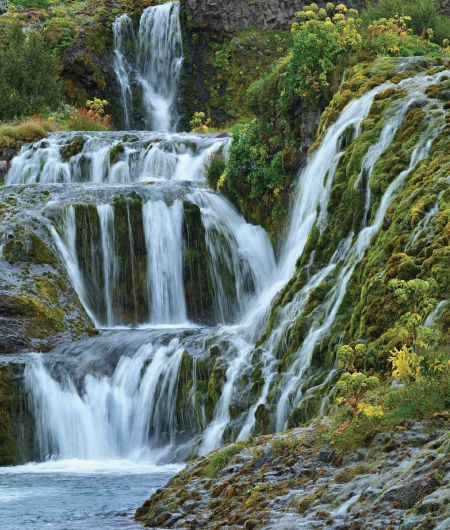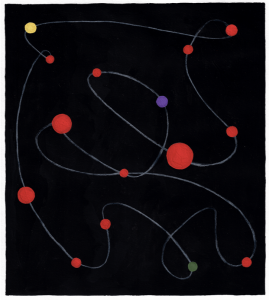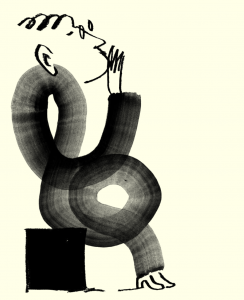- The American author reflects on a moment in paradise, just a few days before the world was to change forever.It’s only in retrospect that it seems odd to have chosen Iceland as a travel destination just two weeks before September 11, 2001. My wife and I hadn’t been on a genuine vacation in a long while. Like always, I was interested in somewhere that contrasted maximally with New York City, where we live. Iceland contrasted in this way: it offered a landscape almost entirely devoid of people.
At the time, Reykjavik, the Icelandic capital, had a reputation as an international destination of cool. There was a lot of dance music coming out of the city; there were a lot of young people there. Björk, the nation’s ubiquitous export, was broadcast in the street; the bars were open late. Once you got beyond Reykjavik, though, there was a whole lot of nothing: rugged, dramatic vistas featuring lichen, volcanic rock, glaciers, fjords, and very, very few people. This was how I liked it. My wife favours warmth, meadows and/or good food (and local cuisine is unlikely to be your reason for a visit to Iceland unless you are eager to try fish cheese). In this case, she was willing go along for the ride.
We arrived early on a Saturday and, in downtown Reykjavik, where the hotel was, we found that the hard drinking Icelandic kids were still up from the night before. We slept off our jet lag to the sounds of drunken revelers finishing their festivities. A day or two spent in and around the city was fun, but it’s not hard to exhaust Reykjavik. There’s a good art museum, a nice shopping district, a fine university library, not to mention the notorious, but rather ho hum, penis museum (it’s true: size doesn’t matter). When we were done with these local tourist traps, we got out of town.
And it doesn’t take long to do. To reach some astoundingly beautiful Icelandic scenery, such as Geysir (from which we get the word geyser, and which is just what you’d expect), or the waterfall called Gullfoss, it takes less than a couple of hours, and most of the driving time is spent going through flat, spooky moonscapes.

Moreover, in rural Iceland, a tourist attraction is usually a place where you drive up, get out of the car, and look. Infrequently are there fees to see things; even less often are there docents, forest rangers, tour buses, queues, parking lots, or anything else. It’s just not that kind of place. Even the notable man-made attraction, Blue Lagoon, where you can bathe in the run-off from a nearby geothermal power plant, is so lovely and peaceful that I advise people laying over in Iceland on their European flights to be sure to stop and have a bath.Above: one of Gjáin’s three astounding waterfalls
- However, the most astounding spot we found in Iceland we found entirely by accident. On the last long day of our trip, we’d set out to find some Saga age structures in Stöng, a couple of hours south of Reykjavik, near the active volcano called Mount Hekla (in days gone by it was considered the actual Mouth of Hell). For some time, we circumnavigated, in our tiny standard-transmission Yaris, the ostensible location of Stöng, unable to find any structures or anything. We became completely confused, notwithstanding our unambiguous directions.
Finally, we got out of the car, believing that a certain dirt track had to be the way to Stöng and its Vikings. We followed the track through a series of forks until, in the middle of nowhere, we came upon a lonely sign marked Gjáin. (The word, I later learned, means rift.) We had no idea what this sign indicated, nor even what feature – road, mountain, valley – it pointed to. But walking a few hundred metres farther we crested a lip of Icelandic desert and descended into a gorge. Not just any gorge, either, but a gorge of astounding and florid, even showoffy, beauty. Here it was: Gjáin.
“Gjáin is our idea about what the Garden of Eden might have looked like, if we were pressed to come up with a real-world analogue”
When Amy and I think back on it now, Gjáin is our idea about what the Garden of Eden might have looked like, if we were pressed to come up with a real-world analogue. Gjáin had not one, not two, but three separate waterfalls, all tumbling into an animated and cheerful creek, it had some interesting little trails from one craggy overlook to another and it had a profusion of blossoming wildflowers, many of them deliciously redolent. This may not sound astounding, wildflowers, until you remember that Iceland is almost completely devoid of trees and shrubs of any kind, partly because of its severe climate, but also because the early settlers burnt everything they could to stay warm. A field of wildflowers in Iceland is a rare thing. A field of wildflowers on a volcanic plain, smelling like paradise? You come upon it once in a lifetime.

- Did I say that there was not a soul there? Not a soul! Not a person. I think, after we sat for half an hour or so, another couple came by, but I have no idea how they set out to find the place, since we’d read nothing about Gjáin in our guide books. To say it was in the middle of nowhere is to understate the case comically. Eventually, after lingering in the gorge, we did manage to find the Viking settlement at Stöng, but by then it was sort of a letdown, when compared with the awesome, unsullied beauty of the place we’d just seen.
Two weeks later, of course, history convulsed upon itself. Now, for some reason, I find it hard not to look back on everything before 9/11/2001 without returning, eventually, to the memory of Gjáin. Back in those days, international tourism seemed like an American birthright. If you had the funds, you went. Now, we are less secure in our travels. Before was the magical aspect of Gjáin, the heavily symbolized gorge of flowers in the middle of a somber landscape. After, life is all about the security screenings. Gjáin was from a fairytale; it was out of a movie. And it still exists in South Iceland. To those who visit it now, in a more jaundiced and fearful world, I’m sure it seems even more precious.
Rick is the author of The Ice Storm

Subscribe to Port Magazine annually and receive each issue to your door.
Get PORT in print



